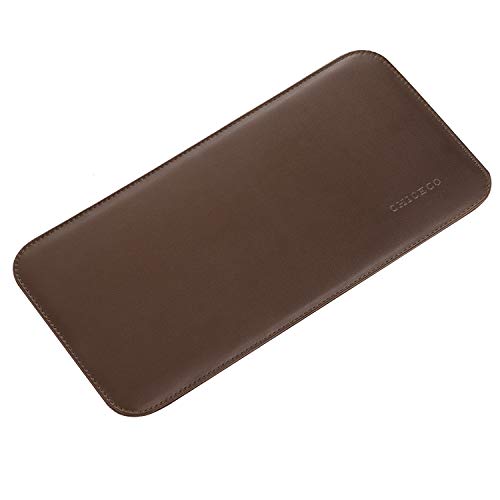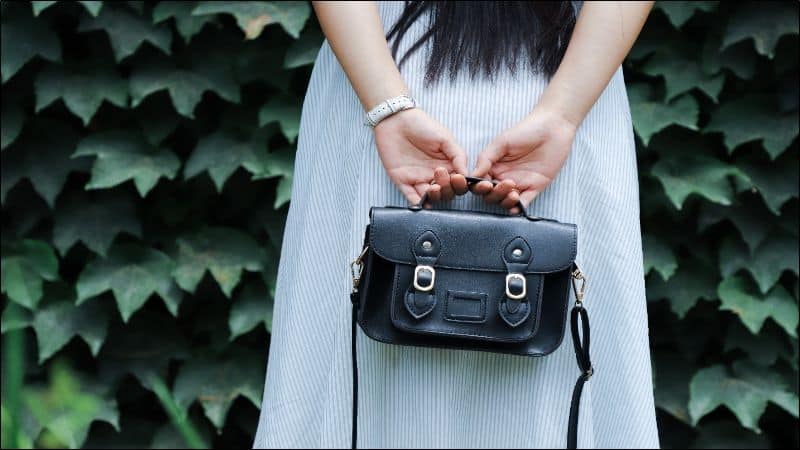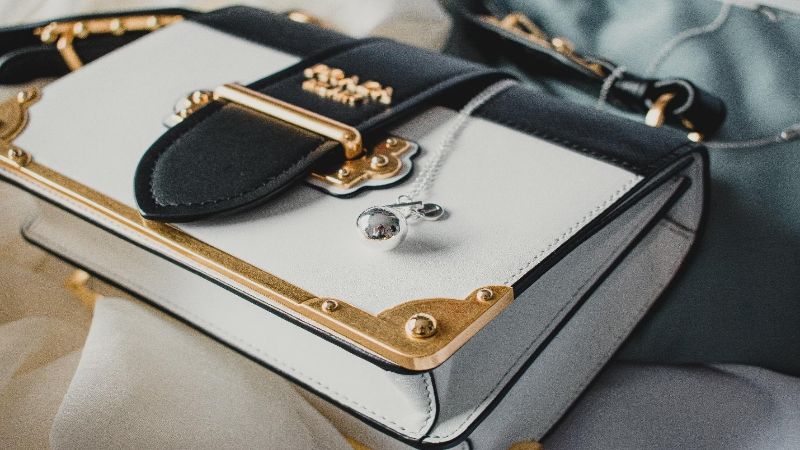Ever peeked inside your favorite handbag and been greeted by a less-than-pleasant sight? You’re not alone. Handbag linings can be a hotspot for dust, spills, and the mysterious crumbs of life’s daily hustle.
Why cleaning your handbag lining is important
You might not see it at first glance, but the lining of your handbag could be harboring more than just loose change and old receipts. Think about it – handbags go everywhere with you. From restrooms to restaurants, the bottom of your handbag has probably touched surfaces you’d rather not think about.
Germs and bacteria thrive in the warm, dark environments of a purse lining. Studies have shown that handbags can carry more bacteria than an average toilet seat. This isn’t just unpleasant; it’s potentially harmful to your health. Regular cleaning can minimize this risk and keep you healthy.
But it’s not just about health. The state of your handbag lining can impact your bag’s lifespan. Debris like spilled makeup or the crumbs from your snack can attract pests or cause the fabric to deteriorate faster. By keeping the lining clean, you extend the life of your handbag, saving money in the long run.
Moreover, a stained or dirty lining can affect the resale value if you’re the type to switch up your fashion with the seasons. Prospective buyers will inspect every inch, and you’ll want your handbag looking its best. Plus, a clean handbag just feels better – it’s like giving your daily companion a fresh start.
Cleaning your handbag lining isn’t just for aesthetics; it’s practical and hygienic. It reflects your personal care and attention to detail. So next time you switch out your items from one bag to another, take a moment to check the lining. A quick clean-up could make all the difference.
Materials and tools needed for cleaning
Before you start the cleaning process, gather all the necessary materials and tools. This ensures a smooth and efficient cleaning session.
First, you’ll need a gentle soap. This could be a specially formulated leather cleaner if your handbag is made of leather, or a mild detergent for other materials. Always test your cleaner on a small, inconspicuous area to prevent unwanted damage.
Next up, have a soft-bristled brush or an old toothbrush on hand. It’s ideal for loosening dirt and grime that’s embedded in the lining. Be gentle to avoid wear and tear.
You’ll also need microfiber cloths. They are great for both applying cleaner and wiping the lining without leaving behind fibers or causing scratches.
Don’t forget about distilled water; it’s preferable to tap water as it doesn’t contain minerals that could stain the fabric.
For tougher stains, stain remover designed for use on fabric is key. Opt for one that suits the material of your handbag lining.
A vacuum with a hose attachment can help remove dust and loose particles before the wet cleaning begins.
Lastly, have some cotton swabs ready for those hard-to-reach corners and crevices.
To summarize, here’s a quick checklist of what you’ll need:
- Gentle soap or leather cleaner
- Soft-bristled brush
- Microfiber cloths
- Distilled water
- Stain remover
- Vacuum with a hose attachment
- Cotton swabs
Ensure you have a well-ventilated workspace and ample lighting. Good visibility is crucial for thorough cleaning. With your tools and materials at the ready, you’re all set to tackle that handbag lining with gusto.
Step 1: Emptying out the handbag
Before you dive into the actual cleaning, ensure your handbag’s completely empty. Take out every item, checking all pockets and compartments. Don’t overlook anything; small items like coins or paperclips often hide in the corners and can cause damage or dirt if left inside during cleaning.
Next, tackle any removable features your bag might have. This includes any detachable lining, pockets, or organizers. If they’re washable, set them aside to be dealt with separately. Keep an eye out for items like manufacturers’ care labels or loose threads that need attention before cleaning starts.
As you’re emptying your bag, you’ll likely find bits of debris, dust, and maybe even old receipts. A hand vacuum or the hose attachment of your regular vacuum cleaner can work wonders here. Carefully vacuum the interior to remove this surface dirt. Be gentle to avoid damage to the lining and focus on corners and seams where nasties like to gather.
« Where to Buy Handbags Cheap in Lagos: Insider Tips for Best Deals
How to Replate Handbag Hardware: Expert Tips for a Shiny Finish »
Remember, some liners and pockets may be stitched in a way that traps dirt, so use cotton swabs to get into these tricky spots. They’re perfect for picking up stubborn particles without applying too much pressure. Anything left behind could end up creating more mess during the wet cleaning stage, so this preliminary step is vital.
With the handbag emptied and the interior preliminarily cleaned, you’re setting the stage for a successful and thorough lining cleanse. Plus, you might just rediscover that long-lost lipstick or earring in the process. Cleaning is not only about maintenance; sometimes it’s a little treasure hunt.
Step 2: Removing loose dirt and debris
Now that you’ve got your workspace ready, it’s time to get down to business. Start by taking out everything from your handbag. Every single item. Receipts, coins, business cards – the lot. It’s crucial to have a complete view of the task at hand, and you can’t do that with clutter getting in the way.
Next, focus on the loose dirt that’s found its way into every nook and cranny. Grab your vacuum with the hose attachment and gently go over the entire lining. Move in small, controlled motions to ensure you don’t miss a spot. A vacuum works wonders for pulling out dust and grit that a cloth can’t reach. Be thorough but gentle to avoid damaging the liner.
You’ll notice some debris is stubborn—or quite frankly, stuck. That’s where your soft-bristled brush comes in. Gently brush the lining using a sweeping motion to loosen any particles clinging on. These little motions can dislodge even the most persistent of crumbs and fibers.
And remember those cotton swabs you gathered? Dip one end into your distilled water (not too much—you don’t want to soak the lining) and run it along the crevices and seams. Cotton swabs are perfect for those hard-to-reach areas and can absorb remnants without too much hassle.
As you work, shake the bag out occasionally to free loosened dirt. Be systematic: bottom corners, side pockets, then seams. Visualize a grid if it helps and tackle each area methodically. This approach ensures you don’t miss finer grime trapped in the less visible sections.
Doing this might seem tedious, but it’s a game-changer for preventing buildup over time. Moreover, the cleaner the lining before you start the wet cleaning, the easier your job will be. Plus, maintaining a pristine interior extends your favorite handbag’s life and keeps it looking as good as the day you bought it.
Step 3: Spot cleaning stains
Once you’ve loosened the dirt, tackle any noticeable stains right away. Stain removal can be tricky; you want to be effective without causing damage. Here’s how to handle common stains on the lining:
- Ink: Apply a small amount of alcohol-based hand sanitizer directly onto a microfiber cloth and dab carefully onto the ink stain. Avoid rubbing, as this can spread the ink.
- Food: Gently scrape off any excess with a plastic knife. Mix a solution of water and gentle soap, then apply sparingly with a cloth. Blot, don’t rub.
- Oil: Sprinkle baking soda on the stain and leave it for a few hours to absorb the oil. Brush away gently before using a mild soap solution to treat any remaining mark.
For stubborn stains, consider a commercial stain remover. Check the label to ensure it’s safe for your handbag’s lining material. Test on a hidden area first. Apply the stain remover with a cloth gently and then remove with a damp cloth.
If the lining is detachable, you can remove it for easier spot cleaning. Lay it flat on a clean surface or hang it up, depending on the material and shape. Be patient; some stains might need a couple of rounds of treatment.
After spot treatment, let the lining air dry completely before reinserting it into your handbag. If it’s not detachable, ensure the bag is open and well-ventilated to dry. Avoid heat sources like hair dryers; they can warp or shrink fabrics.
Remember, regular maintenance can ward off serious stains and dirt buildup. Quick attention to spills and routine spot cleaning preserve the lining’s condition, keeping your handbag looking its best.
Step 4: Deep cleaning the lining
After you’ve dealt with spots and stains, it’s time for a deep clean. Mix a solution of gentle soap or leather cleaner with distilled water. The ratio should be mild enough to avoid damage—usually a teaspoon of soap to a cup of water does the trick.
Dip a microfiber cloth into the solution and wring it out until it’s just damp. You don’t want excess moisture seeping into the lining. Gently wipe the fabric in sections, using a circular motion. Be careful around stitched areas as they can be more delicate.
For heavy-duty grime, revisit with your soft brush. Lightly dip it into the cleaning solution and scrub in a soft, circular motion. This will lift dirt without damaging the fibers.
Next, tackle the harder to reach areas. Fold your microfiber cloth to get into seams and crevices. You’ll be surprised at the amount of hidden dirt that accumulates there.
If your handbag lining is detachable, it may be tempting to toss it in the washing machine, but resist this urge. Machine washing can distort the shape and damage the material. Stick to hand cleaning for the best results.
Once you’ve covered every inch, go over the lining with a clean, damp cloth to remove any soap residue. Then, take a dry microfiber cloth and gently pat the lining to pick up any lingering dampness.
Allowing the lining to air dry is critical. Prop the handbag open in a well-ventilated area away from direct sunlight, which can fade the fabric. Use a drying rack if the lining is detachable to ensure air circulation on all sides.
Remember, frequent deep cleans can prolong your lining’s life, keeping it fresh, hygienic, and in tip-top shape. Regular maintenance can save you from future, more time-consuming cleanings. Just a bit of preventive care each time you use your handbag can make a world of difference.
Step 5: Drying and reassembling the handbag
After cleaning, drying is crucial for preventing mold or mildew from developing within the fibers of your handbag’s lining. Begin by laying out the lining flat, ideally in a well-ventilated area away from direct sunlight which can cause discoloration or warping. Allow the lining to air dry completely, which could take several hours or, in some cases, overnight.
Patience is key— do not use a hair dryer or other artificial heat sources to speed up the process as these can shrink or damage the fabric. If your lining is detachable, you may hang it up to dry. Ensure it’s evenly supported to avoid stretching or misshaping. For non-detachable linings, be sure to keep the bag open to facilitate air circulation.
Once the lining is dry, inspect it closely. Touch the fabric in various places to confirm there are no damp spots left. If you’re satisfied, begin the reassembly of your handbag. If your bag included any removable features like organizers or pockets, now’s the time to reattach or insert them.
Use the opportunity to recondition any leather parts on your handbag as well. A quality leather conditioner applied with a soft cloth can revive the material, making it soft and preventing cracks. For non-leather bags, a suitable fabric protector spray can help to repel future dirt and stains.
Lastly, carefully place your items back into the handbag. Consider using pouches or dividers to keep the interior organized and make future cleanings simpler. By systematically tackling the cleaning and maintenance of your handbag’s lining, you’re not just preserving its aesthetic—you’re extending its serviceable life and functionality.
Tips for maintaining a clean handbag lining
A pristine handbag lining isn’t just about occasional clean-ups; it’s about daily habits. Think of your handbag as a trusty companion deserving regular care.
Empty your bag regularly. Crumbs, receipts, and makeup spills sneak up on you. Every week, turn your bag inside out and shake out the debris. It’s preventive maintenance at its simplest. Make it a ritual.
Storing essentials in pouches. Lipsticks and pens are notorious for creating messes. Store them in small pouches or makeup bags. This way, you compartmentalize the potential chaos and your lining stays spotless.
Avoid Overloading
Resist the urge to treat your handbag like a suitcase. Overpacking can stress the fabric, leading to tears and wear. If it’s bulging at the seams, it’s time to repack.
Use Stain-Repellent Sprays
A quick spritz of a stain-repellent spray designed for fabrics can make a world of difference. Apply it following the manufacturer’s instructions and let it dry. This invisible shield helps repel stains before they set in.
Quick Spot Cleaning
Accidents will happen, that’s life. When they do, act fast. Gently dab at spills with a microfiber cloth. Waiting increases the stain’s tenacity, making the job harder later on.
Remember, immediate attention to spills and marks is the golden rule in handbag care. Always have a stash of cleaning wipes handy for quick fixes on the go.
Regular Professional Clean
For those high-end bags or challenging issues, trust the professionals. A yearly visit to a bag spa can rejuvenate your bag’s appearance and extend its lifespan.
Implement these tips to keep your handbag’s lining in impeccable condition. Your handbag isn’t just an accessory; it’s a statement. Keep it clean, keep it classy.
Conclusion
You’ve got this! With your materials at the ready and a clear guide to tackling each step, you’re well on your way to rejuvenating that handbag lining. Remember patience is key—let that lining air dry thoroughly before you jump back into using your refreshed bag. Keep up with the regular maintenance tips you’ve learned today and you’ll not only extend the life of your handbag but you’ll also keep it looking as chic as the day you bought it. And hey, for those tougher challenges or luxury items don’t hesitate to turn to a pro. Now go enjoy that like-new handbag of yours!
Frequently Asked Questions
What materials are needed to clean a handbag lining?
You will need gentle soap or leather cleaner, a soft-bristled brush, microfiber cloths, distilled water, a stain remover, a vacuum with a hose attachment, cotton swabs, and a well-ventilated workspace with good lighting.
How do I start cleaning the handbag lining?
Begin by removing loose dirt and debris with a vacuum and brush. Next, assess any stains and apply stain remover as needed. Follow up with spot cleaning and then move to a more thorough deep clean using the suggested materials.
What is the importance of distilled water in cleaning a handbag lining?
Distilled water is recommended because it is free of minerals and impurities found in tap water that could potentially cause stains or degrade the material of the handbag lining.
How can I dry the handbag lining after cleaning it?
Allow the handbag lining to air dry completely. Do not use a hairdryer or any heat source as it can damage the lining.
What should I do once the handbag lining is dry?
After the lining is dry, reattach any removable parts of the bag and apply leather conditioner to any leather components to keep them supple.
How can I maintain a clean handbag lining?
Maintaining a clean lining involves regular emptying of the bag, using pouches for small items, avoiding overloading, applying stain-repellent sprays, and performing quick spot cleanings as needed.
When should I seek professional cleaning services for my handbag?
Seek professional cleaning services for high-end bags or if you encounter challenging stains or issues that are not easily addressed with home cleaning methods.











